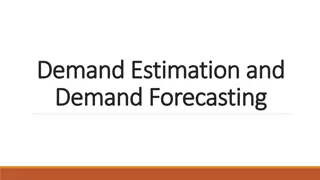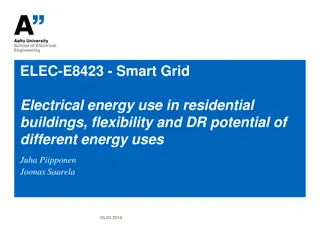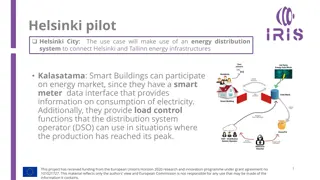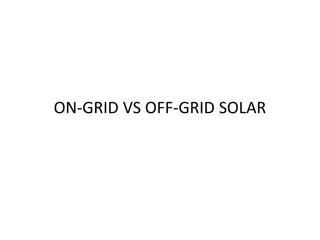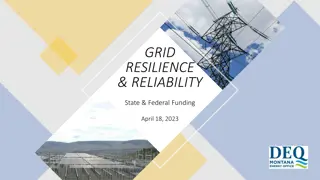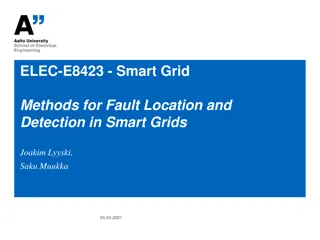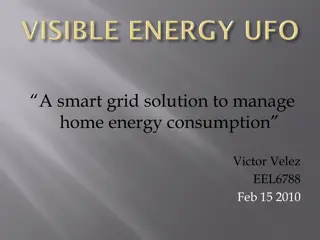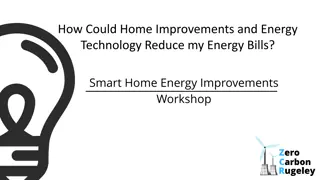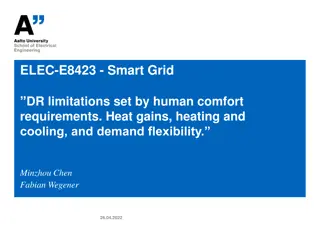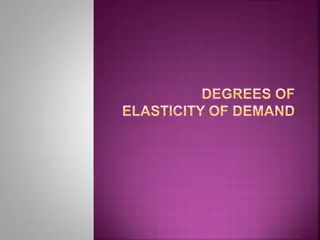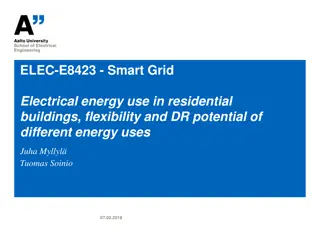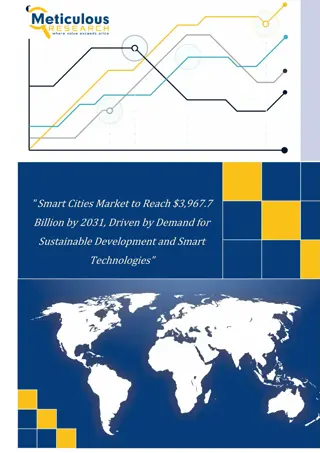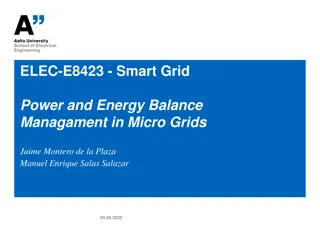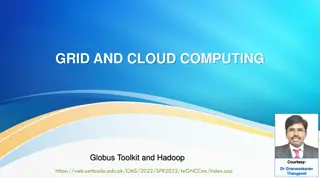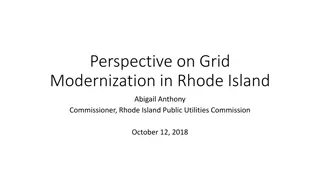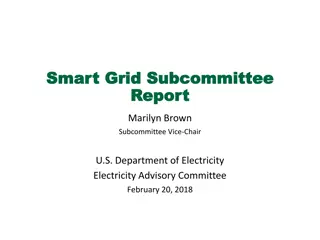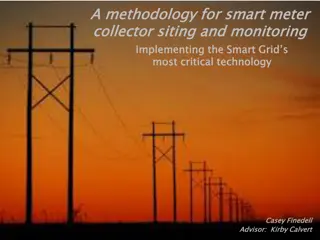Smart Grid Demand Response for Energy Balance Management
The presentation delves into Demand Response in Power Systems, focusing on balancing electricity consumption to match supply and demand. It covers key terms, power system balancing, providers of demand response, reserve products in Finland, aggregation and forecasting of demand and supply, and smart metering automation. Learn about the benefits of aggregation, the role of independent aggregators, and the importance of predictable demand and supply for efficient energy management.
Uploaded on Mar 11, 2025 | 2 Views
Download Presentation

Please find below an Image/Link to download the presentation.
The content on the website is provided AS IS for your information and personal use only. It may not be sold, licensed, or shared on other websites without obtaining consent from the author.If you encounter any issues during the download, it is possible that the publisher has removed the file from their server.
You are allowed to download the files provided on this website for personal or commercial use, subject to the condition that they are used lawfully. All files are the property of their respective owners.
The content on the website is provided AS IS for your information and personal use only. It may not be sold, licensed, or shared on other websites without obtaining consent from the author.
E N D
Presentation Transcript
ELEC-E8423 - Smart Grid Demand Response in Power System Energy Balance Management Sonja Nurmiainen & Emma Kuula 21.03.2023
Introduction Define broad scope of the presentation and explain the key terms Demand Response A change in electricity consumption done by consumer to help keep the supply and demand in balance. Typically, power systems are balanced by a local transmission system operator (TSO) Fingrid Shiftable loads (charging an electric vehicle, washing machine, etc.) Interruptible loads (lights, paper machine) 07.02.2018 Page 3
Power system balancing The balance is indicated by the frequency of the grid 50 Hz (49.9-50.1 in a normal state) > 50 Hz production is greater < 50 Hz consumption is greater Balancing energy market Bids are activated in price order, technical conditions considered Bids can be delivered and updated 45 minutes before each operating hour. Separate up- and down-regulation bids. Resreve capacity 07.02.2018 Page 4
Providers of demand response 07.02.2018 Page 5
Reserve products in Finland 07.02.2018 Page 6
Aggregation and forecasting of demand and supply Aggregation = combining several prosumers in order to have sufficient capacity for frequency response Fingrid reserve market participation for independent aggregators FCR-D and FFR minimum offer 1 MW (used in large frequency deviations) Why aggregation is helpful? Rapid frequency response service Reduction of spinning reserve generators is achievable Aggregated loads are easier to predict Why predictable demand and supply is important Reduced price volatility in electricity market Less need for intraday market and quick maneuvers More RES can be implemented Independent aggregator Balance responsible party Balance responsible party Retailer Retailer Retailer 21.03.2023 Page 7
Smart metering and automation of load shifting Current electricity meters only allow manual demand response Automation in DR can deliver more convenience, predictability and reliability Future meters: advanced smart meters The meter has timely price- and power balance information Household devices connected to the smart meter can be programmed to run automatically when electricity is cheap UK study: 2/3 of customers would be willing to share meter data with 3rd parties to improve system or market efficiency 80% of households with smart meters would like to have incentive-based electricity price Smart meters ultimately make themselves unnecessary? Who is willing to invest in such technology? 21.03.2023 Page 8
Benefits vs. challenges of demand response Benefits Environmental More renewable energy integration without excessive investments Could smart meters have information on time-of-use generation emissions? Monetary Reduces investment needs in distribution network DR paticipants gain money from load shifting Less volatile market price Security of energy system, more reserve capacity left available Challenges Forecast inaccuracy in DR amount What is the incentive to shift loads? Smart meter investment challenges Missing regulatory framework for smart appliances Promised DR Actual DR 21.03.2023 Page 9
Conclusions DR providers: large and small participants, Fingrid Aggregation Demand response allows more RES integration and smooths market prices Accurate demand response provides monetary savings in grid balance investments There is room for development Smart meters and automation 21.03.2023 Page 10
Source material used Potential of demand side response aggregation for the stabilization of the grids frequency: https://doi.org/10.1016/j.apenergy.2018.03.115 The Demand Response Technology Cluster: Accelerating UK residential consumer engagement with time-of-use tariffs, electric vehicles and smart meters via digital comparison tools: https://doi.org/10.1016/j.rser.2020.110701 Energy smart appliances interoperability. Analysis on data exchange from state-of-the-art use cases: https://op.europa.eu/en/publication-detail/-/publication/8dfe10cc-324a-11ed-975d-01aa75ed71a1/language-en/format- PDF/source-282455871 Tasevastaavap iv 2022: https://www.fingrid.fi/globalassets/dokumentit/fi/ajankohtaista-tapahtumat/tasevastaavapaiva- 14.3.22.pdf Reserve products and reserve market places, Fingrid: https://www.fingrid.fi/globalassets/dokumentit/en/electricity- market/reserves/reserve-products-and-reserve-market-places.pdf Source not used (access problems), but could be very useful: Active Electrical Distribution Network, https://doi.org/10.1016/C2020-0-02169-9 21.03.2023 Page 11


